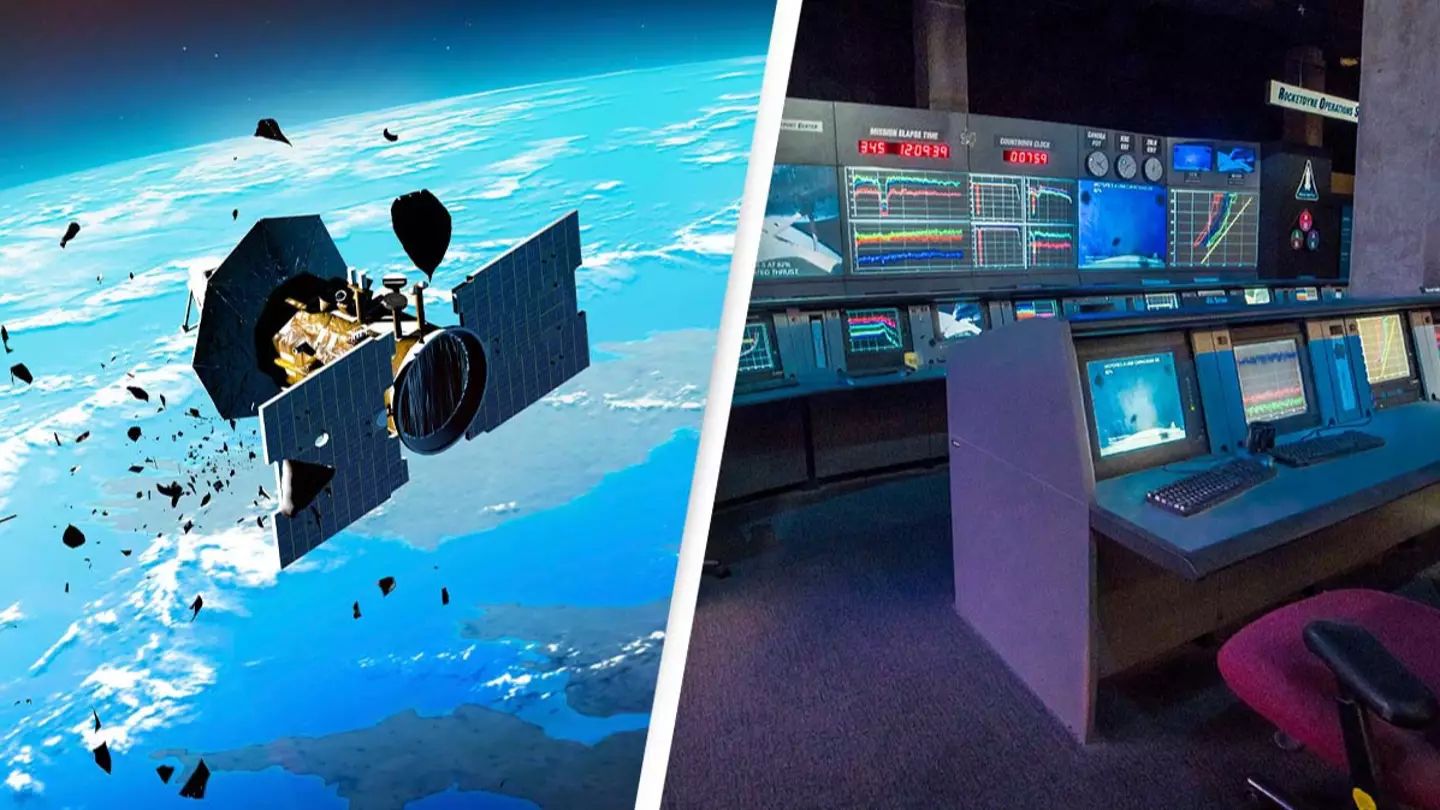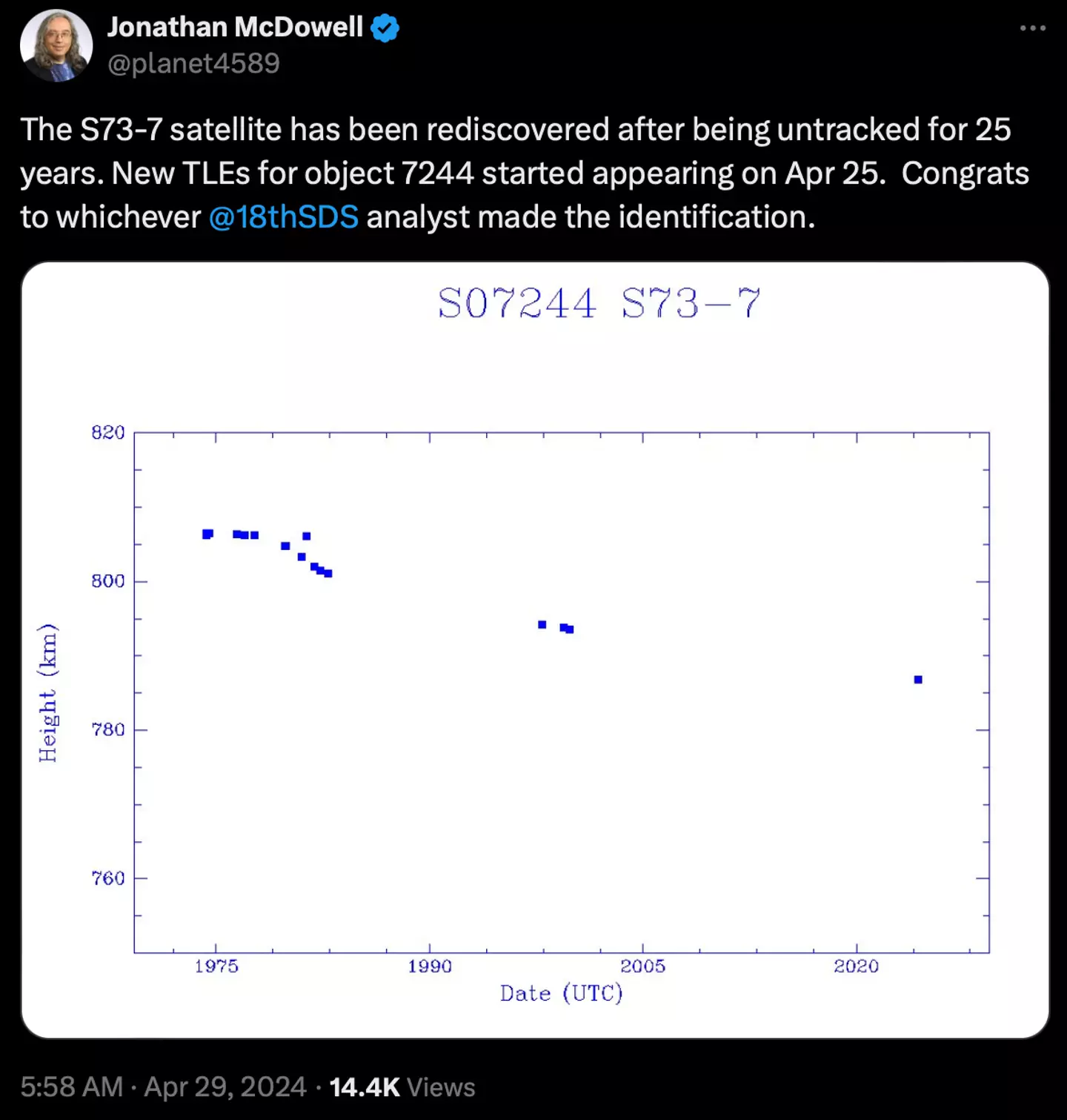
Another day, another discovery made by a group of scientists.
However, this recent discovery is not exactly something new, as a lot was known about it 25 years ago.
We've all misplaced something, haven't we? Whether it be the keys or a wallet.
Advert
Of course, losing such items is pretty bad, but it's perhaps not as bad as losing a satellite - something which is crucial for our presence in space and communication back to Earth.
A satellite called S73-7 had been missing since the 1990s but surprisingly turned up again this week.
And while the re-appearance of the satellite is good news, it has raised a few questions amongst the space community.

Jonathan McDowell, an astrophysicist from the Harvard-Smithsonian Center for Astrophysics, said on X, formerly known as Twitter: "The S73-7 satellite has been rediscovered after being untracked for 25 years. New TLEs for object 7244 started appearing on Apr 25. Congrats to whichever @18thSDS analyst made the identification."
Advert
As per the social media post, the spacecraft was located using tracking data from the 18th Space Defense Squadron.
He added: "S73-7 was a 184 kg USAF Space Test Program/ARPA experiment ejected from a HEXAGON sat in 1974. A pair of solid motors called the ARPA Transfer System boosted S73-7 to 800 km circular orbit. The goal was to deploy an inflatable balloon calibration target, but the deploy failed.
"It's possible the sat has been hiding elsewhere in the catalog as a misidentified debris object, would be interesting to do a data search to find out but I'm too busy right now."
You'd think after 25 years, experts would have given up all hope.

But thanks to their perseverance, their efforts and patience has been rewarded.
Advert
The initial deployment of the satellite and a spotty radar coverage allowed the S73-7 to drop off the grid.
“The problem is that it possibly has a very low radar cross section,” McDowell told Gizmodo.
"And maybe the thing that they’re tracking is a dispenser or a piece of the balloon that didn’t deploy right, so it’s not metal and doesn’t show up well on radar."
The monitoring system may seem pretty robust, especially because it keeps track of 20,000 objects tracked by the Department of Defense’s global Space Surveillance Network.
Advert
However, if the region is very crowded and the object hasn’t been observed for a while, scenario's such as the missing satellite are not exactly uncommon.
Topics: Science, Space, Technology